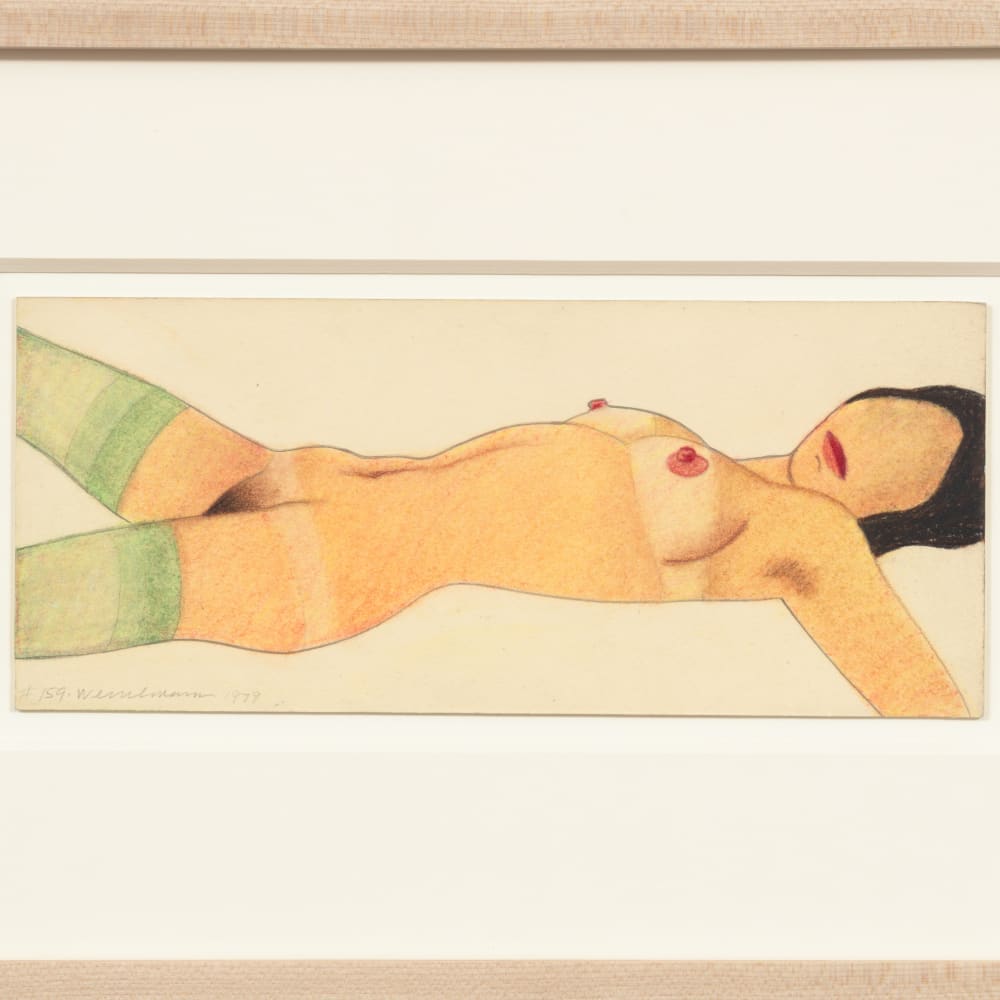-
Artworks
Tom Wesselmann
Open Ended Nude #159, 1979Pastel, pencil and thinned liquitex on ragboard9.8 by 23 cm (3⅞ by 9⅛ in.)Signed 'Wesselmann', dated '1979' and numbered '#159.' (lower left); titled 'Open Ended Nude #159', dated '79' and inscribed '(variable edition) pencil + thinned liquitex on ragboard this is the only pastel version, I think' (on the verso)67477© Tom Wesselmann/Licensed by VAGA, New York, NYFurther images
Executed in 1979. Tom Wesselmann’s Open Ended Nude Drawing series is a group of compositions begun in 1970 that depicts the same singular, tightly cropped reclining nude. In this series,...Executed in 1979.
Tom Wesselmann’s Open Ended Nude Drawing series is a group of compositions begun in 1970 that depicts the same singular, tightly cropped reclining nude. In this series, Wesselmann drew the figure with a hand-made stencil and finished them in a range of colors, usually with thinned liquitex, though others are devoid of color entirely. Wesselmann completed the series at number 200 around 1990, and this example is quite rare as it is one of only two pastels in the group. Each work distinguishes the subject by her skin tone, the color of her thigh-hugging tights (or lack thereof) and hair. Every figure highlights the same secondary and primary sex traits of the biologically female form: uncovered pubic hair, prominent nipples, shadowed armpits, and thin closed lips. The nudes Wesselmann depicted are universal and yet they retain an anonymity that, when viewed today, can traverse boundaries of gender-expression. They exude sensuality and with their lack of facial features–including eyes–completely avoid the viewer’s gaze. In this regard, Wesselmann’s work is a practice in abstraction without a complete disavowal of figuration (an increasing trend among Wesselmann’s contemporaries). By simplifying the figure to these few distinguishing characteristics, Wesselmann recodes the traditional nude to become, as the title maintains, open-ended.











